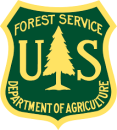Location
States
ArizonaEcosystem
Forest, MontaneIntroduction
The Chiricahua Mountains are a Sky Island range in the Coronado National Forest (CNF) of southeast Arizona. They rise out of desert grasslands up to mixed-conifer forests at elevations over 9,000 ft. Their extraordinary biodiversity and scenery attracts birders and hikers from around the world. In 2011, the Horseshoe 2 fire severely burned large portions of the range, causing widespread loss of vegetation and destabilized slopes. To address resulting soil erosion, partners are engaged in a watershed restoration project in burned (Tex Canyon) and unburned (Bar Boot Allotment) watersheds in the southern Chiricahua Mountains using in-channel loose rock erosion control structures.
Tex Canyon is a drainage network on the Coronado National Forest that drains the southeast portion of the Chiricahua Mountains into the San Simon River. The area was burned in the Horseshoe 2 fire and was identified as a priority area for restoration due to its small size, relatively easy access, and high burn severity.
The Bar Boot allotment on the southwestern flank of the range is largely-unburned land and in the headwaters of Leslie Creek. The downstream Leslie Canyon National Wildlife Refuge was established in 1988 to protect two of the eight native fish species of the much larger Río Yaqui watershed. Cuenca Los Ojos has been conducting similar watershed restoration on the private portion of Bar Boot Ranch for many years. Though Bar Boot is currently unburned, it is at risk for high-severity wildfire and installing erosion control structures can help promote resilience when fires eventually occur by capturing sediment and promoting infiltration after fire reduces stabilizing vegetation cover.
Key Issues Addressed
In many fire-adapted ecosystems in the western United States, historic fire suppression has caused increased fuel-loads and forest densities. When fires occur under these conditions, they often have catastrophic results; loss of vegetation cover following high-severity fires can lead to accelerated erosion, especially on steep slopes and in drainages during monsoon rains that typically follow fire season in the Southwest. In 2011, the Horseshoe 2 Fire burned over 239,000 acres in the Chiricahua Mountains, with over 25,000 acres categorized as high burn-severity. As a result, many burned areas experienced intense flooding and erosion which led to stream sedimentation, infrastructure damage, and degraded watershed conditions. Erosion control structures in drainages can help rehabilitate burned areas by slowing flood flows, reducing soil loss, and promoting vegetation establishment.
Project Goals
- Install erosion control structures in burned and unburned watersheds
- Assess the impacts of structures on vegetation and hydrologic response
- Demonstrate replicable, volunteer-driven pre-and post-fire adaptation actions in uplands of watershed
Project Highlights
Growing Resilience: Roots and canopy of perennial vegetation establishing near erosion control structures can help stabilize the streambed and eventually remove the need for continued management of erosion control structures.
- Site Selection: January 2015, stakeholders conducted site visits in the southern Chiricahua Mountains to identify priority sites for restoration. Tex Canyon and the Bar Boot Allotment were identified because both had accessible reaches with evidence or high risk of erosion, and the pair presented an opportunity to compare the effects of erosion control structures between burned and unburned watersheds.
- Structure Installation: Over 700 loose rock erosion control structures were installed in drainages in 2015 in burned Tex Canyon (585 structures in 7 drainages) and the unburned Bar Boot allotment (123 structures in 4 drainages).
- Inmate Crew: Project partners secured funding to hire an 8-10 person Department of Corrections crew for 30 days of work, including funds to train the crew and supervise the work. The crew installed 585 rock structures in Tex Canyon, and an additional 77 structures at Bar Boot after they had finished Tex Canyon work earlier than expected.
- Youth Engagement: 46 of the structures at Bar Boot were built by a 7-person paid crew of youth interns from Douglas, AZ hired through The Borderlands Earth Care Youth (BECY) Institute, a program that engages youth in conservation and natural resource management.
- Monitoring Restoration Impacts: Monitoring includes USGS long and short-term vegetation study plots, as well as eight separate hydrology data stations (4 in each project area) where flow and inundation sensors are employed to monitor soil moisture and flood events. Sedimentation stakes were also installed upstream of some rock structures to measure deposition and the rise of the channel bed. In the summer of 2016, project partners installed supplementary monitoring equipment, including shallow groundwater piezometers to measure groundwater depth, flowtography stations (cameras set to take photographs at regular intervals paired with staff gauges in the stream channel), and precipitation gauges.
- Clearing Administrative Hurdles: In order to pave the way for this project and future restoration work, the Douglas Ranger District of the CNF completed a programmatic Categorical Exclusion (CE) assessing the effects of a variety of erosion control structures to fulfill National Environmental Policy Act (NEPA) requirements. This means that future projects of this nature on the Douglas Ranger District will not be subject to a time-consuming Environmental Analysis since they have already been assessed to not have negative impacts on the environment. It is hoped that the description of the rock structures provided in the CE and the CNF analysis will serve as a template for similar projects on other public lands.
- Structure Maintenance: Project partners returned to the sites in 2016 with volunteers to repair rock structures that had been damaged by flood events.
Lessons Learned
- After two monsoon seasons the following results were observed at the erosion control structures:
- Increased Sediment Deposits at Tex Canyon: Sedimentation stakes showed an accumulation of 3-14 cm of sediment, with up to 30 cm accumulation observed at un-instrumented structures There was no significant change in sediment levels at instrumented Bar Boot structures, likely due to greater soil stability in this unburned landscape.
- Maintained Soil Moisture & Surface Water: In both watersheds, surface water was present for over 200 hours at stations upstream in the watershed or where confining soil layers were present. Soil moisture was at least moderate (>15%) most of the year at many of the monitoring stations.
- Vegetation Establishment: There are higher frequencies of perennial plants, including native and non-native species, at sites with rock structures, potentially in response to increased sediment and soil moisture. The roots and canopy of perennial vegetation can help stabilize the streambed and eventually remove the need for continued management of erosion control structures.
Continued maintenance and observation of the structures is required, especially following intense monsoon rain events. Many structures blew out during a 500-year flood in 2015 and had to be rebuilt the following year. Additionally, when structures are successful at retaining sediment, the area behind them will fill in, causing water to carve around the structures--at this point, new structures must be installed, and maintenance is required until the channel has rebuilt to a sustainable grade. However it is difficult to maintain funding to monitor structures for a meaningful length of time after installation (beyond 1-2 years).
Sedimentation stakes were installed one year after erosion control structures were installed and sediment had already accumulated behind the structures. Future projects should install instrumentation in conjunction with structure structure
Something temporarily or permanently constructed, built, or placed; and constructed of natural or manufactured parts including, but not limited to, a building, shed, cabin, porch, bridge, walkway, stair steps, sign, landing, platform, dock, rack, fence, telecommunication device, antennae, fish cleaning table, satellite dish/mount, or well head.
Learn more about structure installation to get a more complete analysis of the structures’ effects.
Next Steps
- Use results of this project to increase the scope and scale of this type of watershed restoration on the Forest Service Douglas Ranger District
- Continue annual vegetation monitoring near erosion control structures
Funding Partner
Resources
- Sky Island Restoration Cooperative Annual Report 2015
- Sky Island Restoration Cooperative Annual Report 2016
- Project Storymap: Enhancing Resilience to Catastrophic Wildfire
- Horseshoe 2 Fire Information from the Southwest Fire Science Consortium
- National Environmental Policy Act Information
- Vegetation Monitoring Protocol Presentation by Natalie Wilson, USGS
- Callegary, J. B., et al. (2021). “Preliminary Assessment of Carbon and Nitrogen Sequestration Potential of Wildfire-Derived Sediments Stored by Erosion Control Structures in Forest Ecosystems, Southwest USA.” Air, Soil and Water Research 14.
- Coronado National Forest
Contacts
- Carianne Campbell, Strategic Habitat Enhancements, Formerly Sky Island Alliance: carianne@strategichabitats.com
- Natalie Wilson, US Geological Survey, nrwilson@usgs.gov
Case Study Lead Author
- Ashlee Simpson, CART Graduate Research Assistant, University of Arizona
Suggested Citation
Simpson, A. C. (2018). “Post-Fire Watershed Restoration and Monitoring in the Chiricahua Mountains of Arizona.” CART. Retrieved from





